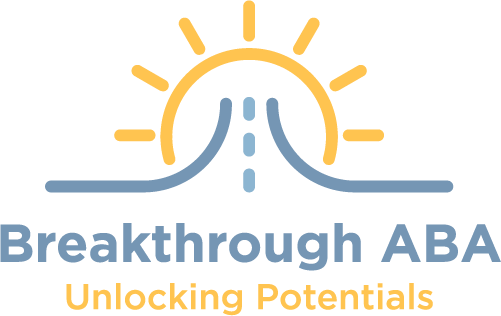Published by Breakthrough ABA
———————
Emotions are part of being human—but for children with autism, understanding and managing those emotions can be especially challenging. That’s why emotional regulation is a critical skill we focus on in ABA therapy at Breakthrough ABA.
Whether it’s learning how to express frustration appropriately, cope with changes in routine, or bounce back from disappointment, ABA provides structured tools that help children respond to emotions in healthy, constructive ways.
Let’s explore how ABA therapy builds emotional regulation—both in the clinic and at home across the Greater Houston area.
What Is Emotional Regulation?
Emotional regulation refers to a person’s ability to manage their emotional responses to various situations. For children with autism, this may include:
- Managing anger or frustration 😡
- Expressing needs instead of melting down 🗣️
- Adapting to unexpected changes 🔁
- Calming themselves after becoming overstimulated 🧘♂️
When emotional regulation is a struggle, everyday moments like sharing toys, transitions, or family outings can become stressful for both the child and the family.
How ABA Therapy Supports Emotional Growth 🌱
ABA (Applied Behavior Analysis) uses data-driven, individualized strategies to help children improve behavior—and that includes emotions and self-regulation.
Here’s how:
1. Identifying Triggers 🔍
Behavior analysts assess the antecedents (what happens before a behavior) to understand what triggers dysregulation. These could include:
- Loud noises
- Demands placed on the child
- Social misunderstandings
- Physical discomfort
Once we know the cause, we can modify the environment or teach coping strategies.
2. Teaching Replacement Behaviors 🛠️
Instead of yelling, hitting, or shutting down, ABA therapists teach children what to do instead. This may include:
- Asking for a break 🛑
- Using a calming strategy (like deep breaths)
- Expressing emotions with visuals or words
- Moving to a quiet space
These are taught through modeling, visual support, and reinforcement until they become habits.
3. Using Visuals and Social Stories 📘
Children often learn best with structure and predictability. ABA uses tools like:
- Emotion cards to identify feelings
- First-Then boards to help prepare for transitions
- Social stories that teach how to handle frustration or sadness
These tools support understanding and reduce anxiety.
4. Reinforcing Self-Regulation Skills 🎯
ABA relies on positive reinforcement to encourage emotional regulation. When a child successfully uses a calming strategy, they may receive:
- Praise
- A preferred activity
- A token toward a reward
Over time, these reinforcements help make self-regulation second nature.
Emotional Regulation Goals in ABA 🎯
Some common goals we work on with children include:
| Skill Area | Example Goal |
| Recognizing Emotions | Identify “mad,” “happy,” “sad” using visuals |
| Expressing Emotions | Say or show “I need help” when frustrated |
| Coping with Disappointment | Use deep breathing or sensory tools |
| Transition Tolerance | Move between tasks with 1-2 verbal prompts |
| Calming Techniques | Go to calm corner when overwhelmed |
The Role of Parents and Caregivers 🤝
One of the most powerful aspects of ABA is that it doesn’t stop at the clinic. Through parent training, we teach families in Houston, Cypress, Katy, The Woodlands, and beyond how to support emotional growth at home.
This includes:
- Recognizing early signs of distress
- Practicing calming routines daily
- Responding with consistent strategies
- Modeling appropriate emotional expression
When everyone is using the same language and strategies, children learn faster and feel more supported.
Emotional Growth Without Suppression 🌈
At Breakthrough ABA, our goal isn’t to make kids “less emotional”—it’s to help them feel confident expressing their feelings in ways that work for them and those around them.
We honor each child’s personality, sensitivities, and communication style. Emotional regulation isn’t about “fixing”—it’s about empowering.
Final Thoughts: A Path Toward Emotional Balance
Emotional regulation is a journey, especially for children on the spectrum. But with the right tools, compassionate guidance, and a team that includes the family, meaningful progress is possible.
At Breakthrough ABA, we’re proud to support families across Greater Houston with ABA therapy that nurtures not only skills—but confidence, connection, and calm. If your child struggles with big feelings, we’re here to help—step by step.
